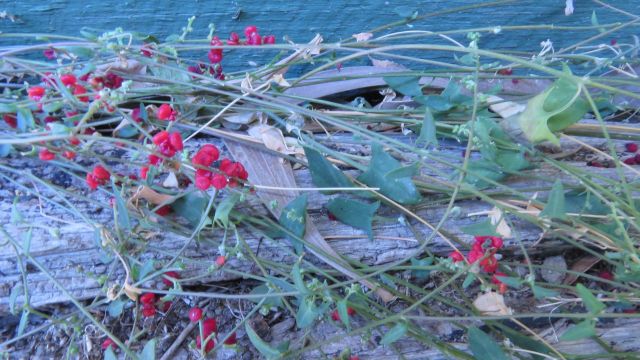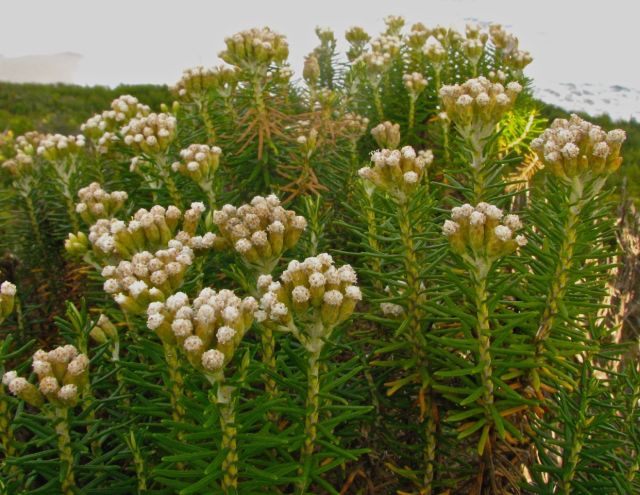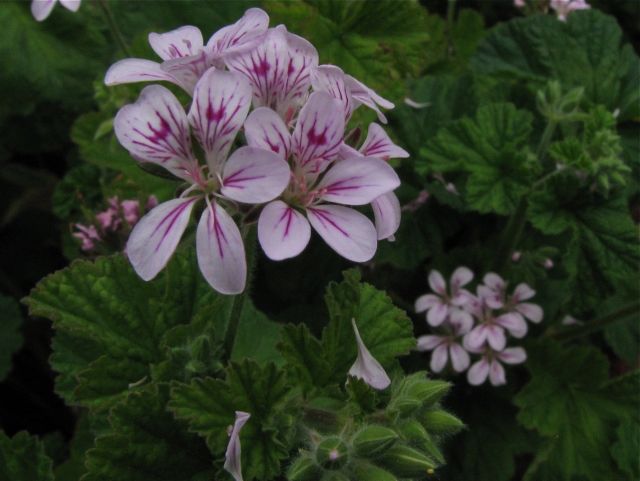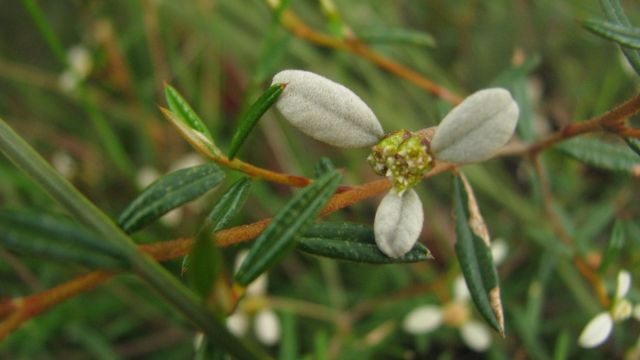The indigenous plants in my garden have been in survival mode over the hot dry summer.
However, one plant that has thrived, even outcompeting the weeds, is Nodding Saltbush Einadia nutans subsp. nutans. This is a sprawling, prostrate plant with narrow, semi-succulent leaves of variable size from 5 -25mm. It likes dry rocky areas but I am not sure exactly where it grows in our district. Look out for its tiny bright red, eye-catching fruit and let me know!

Nodding Saltbush
I sometimes confuse its new growth with Seaberry Saltbush Rhagodia candolleana subsp. candolleana, a common plant in our district, which has more succulent and rounded leaves. This plant is dioecious, meaning it has male and female flowers on separate plants. Sprays of delicious-looking, dark-red juicy berries, are developing on the female plants, but are only suitable for birds to eat.

Seaberry Saltbush
At the plant study group we looked closely at the berries, and were surprised to see each berry had two tiny stigmas (the top of the female part which receives pollen) and, at the base, a red and green skirt formed by the tepals (petals and sepals). So get out your magnifiers and you may be amazed! The male plants have sprays of tiny green flowers, with a flush of pink, which fooled me for years into thinking they would turn into the succulent red berries.
Coast Everlasting Ozothamnus turbinatus, is developing clusters of creamy-yellow tubular flowers. Its bright green foliage stands out in its exposed locations. Look for beautiful moths that are attracted to the flowers.

Coast Everlasting
I have been watching for the small white berries on Coast Beard-heath Leucopogon parviflorus, but have seen very few, and I wonder if they may appear after some good rain.
There are few eye-catching flowers at present. My usual ‘haven’, Allen Noble Sanctuary, has had Austral Stork’s-bill Pelargonium australe in flower since late spring. It has pink, five-petalled flowers with deep-red markings, that grow in clusters on this clump-forming, low-growing, hairy plant. The deeply-veined lobed round or oval leaves are soft to touch. I am unsure where it grows in our district as it has been planted here, but I understand that it prefers damp areas.

Austral Stork’s-bill
Another plant I have seen in flower recently is the aptly named Propeller plant Spyridium vexilliferum. The white ‘propeller’ is actually densely hairy, white leaves, with the less obvious white flowers in the centre. This plant is found in heathlands, for example, above the Anglesea Life-saving Club.

Propeller plant
Good luck and don’t forget to carry your Flowers of Anglesea and Aireys Inlet.
Ellinor Campbell